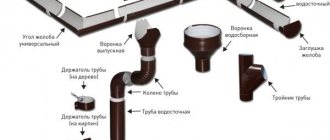Determination of specific gravity
The physical quantity, which is the ratio of the weight of a material to the volume it occupies, is called the HC of the material.
Materials science of the 21st century has gone far ahead and technologies that were considered science fiction a hundred years ago have already been mastered. This science can offer modern industry alloys that differ from each other in qualitative parameters, but also in physical and technical properties.
To determine how a certain alloy can be used for production, it is advisable to determine the HC. All objects made with the same volume, but different types of metals were used for their production, will have different masses, it is in a clear connection with volume. That is, the ratio of volume to mass is a certain constant number characteristic of this alloy.
To calculate the density of a material, a special formula is used, which has a direct connection with the HC of the material.
By the way, the HC of cast iron, the main material for creating steel alloys, can be determined by the weight of 1 cm3, reflected in grams. The more HC the metal, the heavier the finished product will be.
Specific gravity formula
The formula for calculating HC looks like the ratio of weight to volume. To calculate hydrocarbons, it is permissible to use the calculation algorithm, which is set out in a school physics course. To do this, it is necessary to use Archimedes' law, or more precisely, the definition of the force that is buoyant. That is, a load with a certain mass and at the same time it floats on the water. In other words, it is influenced by two forces - gravity and Archimedes.
The formula for calculating the Archimedean force is as follows
F=g×V,
where g is the hydrocarbon liquid. After the substitution, the formula takes the following form: F=y×V, from here we obtain the formula for the shock load y=F/V.
Difference between weight and mass
What is the difference between weight and mass. In fact, in everyday life, it does not play any role. In fact, in the kitchen, we don't make a difference between the weight of a chicken and its mass, but there are serious differences between these terms.
This difference is clearly visible when solving problems related to the movement of bodies in interstellar space and neither those having relations with our planet, and under these conditions these terms differ significantly from each other. We can say the following, the term weight has meaning only in the zone of gravity, i.e. if a certain object is located next to a planet, star, etc. Weight can be called the force with which a body presses on the obstacle between it and the source of attraction. This force is measured in newtons. As an example, we can imagine the following picture: next to a paid education there is a stove with a certain object located on its surface. The force with which an object presses on the surface of the slab will be the weight.
Mass and weight
Body mass is directly related to inertia. If we consider this concept in detail, we can say that mass determines the size of the gravitational field created by the body. In fact, this is one of the key characteristics of the universe. The key difference between weight and mass is this - mass does not depend on the distance between the object and the source of gravitational force.
To measure mass, many quantities are used - kilogram, pound, etc. There is an international SI system, which uses the usual kilograms, grams, etc. But besides it, many countries, for example, the British Isles, have their own system of weights and measures, where weight is measured in pounds.
Definition of an economic indicator
Definition 1
An economic indicator is a value that characterizes the state of the economic system, its subjects or objects, as well as processes and phenomena that occurred in past, present and future periods.
Theoretical economics provides the basis for justifying management decisions in the sphere of production, as well as regulating the activities of large economic systems. Economic indicators are one way to interpret events occurring in the economy.
The economic indicator consists of:
- Names.
- Numeric value.
- Units.
Using indicators, a researcher can predict the future state of systems, analyze their current position, compare data with basic values, to track the dynamics of development of system indicators. The system of economic indicators is a set of individual indicators that are interrelated with each other. Systems of indicators are used to describe the general economy of the country, as well as clarify processes and phenomena in individual sectors of the national economy, in regions, economic groups, and various spheres of economic activity.
Finished works on a similar topic
- Course work Specific indicators 410 rub.
- Abstract Specific indicators 230 rub.
- Test work Specific indicators 250 rub.
Receive completed work or specialist advice on your educational project Find out the cost
Economic indicators can be used for both macroeconomic systems and microeconomic ones. In each of the areas they are called upon to solve corresponding problems. At the macro level, with their help, the economy itself and its large structural components are characterized. At the micro level, indicators make it possible to analyze and predict the activities of enterprises, individual entrepreneurs, and households.
Difference Between Specific Gravity and Density
UV - what is it?
Specific gravity is the ratio of the weight of matter to its volume. In the SI international system of measurements it is measured as newton per cubic meter. To solve certain problems in physics, hydrocarbons are determined as follows - how much heavier the substance being examined is than water at a temperature of 4 degrees, provided that the substance and water have equal volumes.
For the most part, this definition is used in geological and biological studies. Sometimes, the HC calculated using this method is called relative density.
What are the differences
As already noted, these two terms are often confused, but since weight directly depends on the distance between the object and the gravitational source, and mass does not depend on this, therefore the terms shock wave and density differ from each other. But it is necessary to take into account that under certain conditions mass and weight may coincide. It is almost impossible to measure HC at home. But even at the school laboratory level, such an operation is quite easy to perform. The main thing is that the laboratory is equipped with scales with deep bowls.
The item must be weighed under normal conditions. The resulting value can be designated as X1, after which the bowl with the load is placed in water. In this case, in accordance with Archimedes' law, the load will lose part of its weight. In this case, the balance beam will warp. To achieve balance, a weight must be added to the other bowl. Its value can be designated as X2. As a result of these manipulations, a shock wave will be obtained, which will be expressed as the ratio of X1 and X2. In addition to substances in the solid state, specific values can also be measured for liquids and gases. In this case, measurements can be performed under different conditions, for example, at elevated ambient temperatures or low temperatures. To obtain the required data, instruments such as a pycnometer or hydrometer are used.
Interpretation of the concept
The designation of specific gravity (SG) depends on its interpretation : physical or statistical. In the first case, a quantity measured in a unit of something is used. In statistics, a private indicator is used. It must be measured relative to some whole. Calculation of dependence: the annual state budget is 500 million. Spending on sports accounts for 1 million rubles, which corresponds to 0.2% of all costs.
In physics, the indicator is written with the letter N - Newton. Specific gravity formula and unit of measurement: SG = body weight/volume. Using the value, the labor force with which 1 cubic meter acts on the support is determined. meter of material being measured. Weight is considered a vector quantity that can have a direction of application, describing the overall impact of the body on other objects. If you change the structure of the formula using the mass of the body, you get HC or density.
The parameter means how much solution or substance is contained in a unit volume. Ratios are measured in kg/cubic meter. m. The last indicator is not characterized by changes, but the weight may fluctuate depending on the location and height of the fall. If the relationship between the parameters is represented as a fraction in which the numerator is the mass of water multiplied by the acceleration, then the following equality can be written: HC = density x acceleration.
To obtain an alloy with the desired properties, the HC is calculated. For equal volumes of iron and aluminum, the indicators are different. To find an accurate result, the metal is converted into a homogeneous composition.
In some cases, the required one can be considered a comparison coefficient for the mass of a substance relative to water with the same weight, but a temperature of 4 °C. Under such conditions, the HC of the liquid is equal to unity. Weight increases due to the amount of impurities.
Metals with the highest and lowest specific gravity
In addition to the concept of specific gravity used in mathematics and physics, there are also quite interesting facts, for example, about the specific gravities of metals from the periodic table. If we talk about non-ferrous metals, then the heaviest ones include gold and platinum.
These materials exceed in specific gravity such metals as silver, lead and many others. “Light” materials include magnesium with a weight lower than that of vanadium. We must not forget about radioactive materials, for example, the weight of uranium is 19.05 grams per cubic cm. That is, 1 cubic meter weighs 19 tons.
Assessing financial results: stages and indicators
It is important to understand: there are no hard and fast rules in financial analysis. This means that the analyst always chooses the calculation method and the set of both initial and final indicators himself. Therefore, our approach is approximate. In it, we focused primarily on Russian reporting. It does not have ready-made indicators of marginal profit, EBITDA, NOPAT, etc. They will not be in our stages and examples.
We offer step-by-step instructions on how to make a financial analysis of an enterprise in terms of financial results.
Stage 1. Conduct a horizontal analysis of profit (loss)
The essence of horizontal analysis is to understand how the financial result has changed compared to the previous period. Here are some of its features:
- you will need at least two profit (loss) values. One of them is taken as the basis for comparison. Typically this is a value from the earliest time period;
- either absolute or relative deviations of the actual level from the base level are calculated. To calculate the latter, formulas for growth rates and increments are useful. See them in table 1;
- absolute deviations are measured in the same unit as the analyzed indicator. In our case it will be rubles. Relative – either as a percentage or as a share;
- if the indicator in the base period was zero or had a different sign than in the current one, then the growth/increase rates will either not be calculated or they will not make sense. For example: in 2021 the organization received 1 million rubles. loss, and in 2021 – 2 million rubles. arrived. The growth rate is: 2 ÷ (-1) × 100% – 100% = -300%. If interpreted literally, it will turn out like this: the financial result for the year decreased by 300%. Agree, this is stupidity;
- the nature of the change (positive, negative) does not depend on the sign of the resulting deviation. It is determined by the meaning of the indicator itself. For example, growth and, therefore, positive deviations are important for income or profit. For expenses and losses, on the contrary, they are negative.
Table 1.
Deviation formulas for horizontal analysis
| Indicator name | Formula | |
| Absolute deviation | N1–N0 | |
| Relative deviations | Growth rate | N1 ÷ N0 × 100% |
| Rate of increase | (N1 – N0) ÷ N0 × 100% | |
| Note: N0, N1 – values of the analyzed indicator in the base and current periods | ||
Stage 2. Perform a vertical analysis of the financial results of the enterprise
Vertical analysis consists of calculating the specific weight of any indicator in the total sum of homogeneous values. Otherwise, it is an assessment of the structure in which a separate element is correlated with a certain whole of which it is a part.
This approach has a unique feature for all indicators from the financial results statement, since it is not immediately clear what is considered the whole into which the partial values will be divided. Reason: the report is based on the principle of subtraction, not summation, unlike the balance sheet.
Therefore, we propose to implement vertical analysis in two directions:
- for retained earnings from the balance sheet, calculate its share in equity and/or liabilities. This will make it possible to understand how significant the contribution of the accumulated result is to the total amount of sources of financing the enterprise’s activities;
- for other types of profit from the income statement, correlate their value with income. Moreover, for gross profit and sales, calculate the ratio with revenue. For profit before tax and net – with the amount of revenue and other income. Rationale: this way we will make a comparison with those incomes that took part in the calculation of a specific type of financial result. What will these calculations show? What amount of earned income remains with the enterprise at each stage of profit formation. Indirectly, this is a characteristic of the significance of the expenditure part, because the lower the share, the more expenses there are for each ruble of income.
It is important to remember: vertical analysis is meaningless for loss indicators.
Here is the formula for calculating specific gravity:
Ni = ∑Ni × 100%,
where Ni is the value of a specific indicator (part);
∑Ni is the value of the general indicator, which includes Ni as a component element (whole).
Absolute values of financial results have a big drawback: a low degree of comparability with other organizations. This is true even if the financial statements of enterprises of the same type of activity are examined.
Stage 3. Calculate profitability indicators
Absolute values of financial results have a big drawback: a low degree of comparability with other organizations. This is true even if the financial statements of enterprises of the same type of activity are examined. For example, a federal retail chain’s ruble profit will easily be many times higher than that of a local store. However, its ratio to the value of assets, equity or revenue may show a different picture - not at all in favor of the trading giant.
Such relationships between the values of the financial result and other indicators of the organization’s activities are called profitability. Their undoubted advantage is the opportunity to compare initially disparate absolute values.
Here are a few features that are characteristic of such relative quantities:
- There is a basic calculation scheme. Its essence: the numerator is always profit, the denominator is the indicator whose profitability is calculated. Most often these are: assets, equity and revenue. But nothing prevents us from putting only non-current or current assets, liabilities or borrowed funds into the denominator. The specific names of the indicators are determined by the denominator. For example, return on assets, equity, sales, etc.;
- What kind of profit should be used in the numerator? Decide for yourself. More often than others, net and from sales are used;
- if the denominator of the formula contains a balance sheet indicator, then its average annual value is taken, and not just the value as of the date. Why? Because the profit from the numerator is the financial result that is obtained for the period. It is incorrect to combine periodic and point values when calculating. A reasonable solution: turn what happened on the date into what was on average for the year. Not the most accurate, but the easiest way to do this is to sum up the halves of the values at the beginning and at the end of the year. Remember: in the balance sheet, all data is presented at the end of the period, for example, as of December 31, 2019. They can be regarded as the value at the beginning of the next year, that is, as of January 1, 2020;
- How is profitability measured? Standard practice is percentages. Less often – fractions of units. And very rarely, but also acceptable - rubles for rubles. For example, for return on assets, calculated based on net profit and equal to 10%, the interpretation will be as follows: for every ruble invested in assets, there is a return in the form of 10 kopecks of net profit;
- It is incorrect to call profitability those indicators whose numerator is a loss. More correctly – unprofitability. In this case there will be no contradiction with the original meaning of the word “rent”.
See Table 2 for the formulas for the main profitability indicators. In the following example we will use just such a set.
Table 2.
Relative indicators for assessing financial results
| Index | Formula | |
| by net profit | by sales profit | |
| Return on assets | Emergency ÷ Asr. × 100% | PP ÷ Asr. × 100% |
| Return on equity | Emergency ÷ SKsr. × 100% | PP ÷ SKav. × 100% |
| Return on debt capital | Emergency ÷ ZKsr. × 100% | PP ÷ ZKsr. × 100% |
| Return on sales | PE ÷ V × 100% | PP ÷ V × 100% |
Note:
| ||
Stage 4. Assess the impact of individual factors on the financial result
Factor analysis of financial results can be implemented in two directions:
- by absolute values of profit (loss);
- by relative values, that is, by profitability.
Let's look at the formulas for each of them.
Suppose: the analyst has nothing at his disposal except the financial statements of the enterprise. He does not have data on price, sales volume and operating profit for a specific product item. Then the following factor analysis formula will be optimal:
PP = B – SP – KR – UR,
where SP is the cost of sales (2120 OFR);
KR – commercial expenses (2210 OFR);
UR – administrative expenses (2220 OFR).
With its help, the influence of four factors (in the formula on the right) on the value of the financial result is assessed.
The peculiarity of the formula: to calculate the factor influence using it, there is no need to use any special techniques. When factors are linked through an algebraic sum, it is enough to calculate the absolute deviation of each to understand what its impact on the financial result was.
There are many models for factor analysis of profitability. Let's focus on the most popular - the DuPont model. Here is its three-factor formula:
Rsk = Rp × Koa × MK,
where Rsk is return on equity;
Рп – profitability of sales;
Koa – asset turnover ratio (B ÷ Asr.);
MK – equity multiplier (Avr. ÷ SKr.).
To assess the impact of three factors on return on equity, we apply the absolute difference method. Table 3 contains ready-made formulas for this DuPont model.
Table 3.
How to calculate the influence of factors in the DuPont three-factor model
| Factor | Formula for assessing its influence |
| Return on sales | ∆Рс (Рп) = ∆Рп × Koa 0 × MK 0 |
| Asset turnover ratio | ∆Rsk (Koa) = Rp 1 × ∆Koa × MK 0 |
| Equity multiplier | ∆Рsk (MK) = Рп 1 × Koa 1 × ∆МК |
Note:
| |
If everything is calculated correctly, then the absolute change in Rsk and the total impact of factors will be equal:
Rsk = ∆Rsk (Pp) + ∆Rsk (Koa) + ∆Rsk (MK).
Specific gravity of other materials
It is difficult to imagine our world without many materials used in production and everyday life. For example, without iron and its compounds (steel alloys). The HC of these materials fluctuates in the range of one to two units and these are not the best results. Aluminum, for example, has low density and low specific gravity. These indicators allowed it to be used in the aviation and space industries.
Specific gravity of metals
Copper and its alloys have a specific gravity comparable to lead. But its compounds - brass and bronze are lighter than other materials, due to the fact that they use substances with a lower specific gravity.
Types of indicators used in economics
The entire set of indicators used in economics is divided into two groups:
- Natural.
- Cost.
The grouping depends on the measures used to calculate these indicators. The most convenient form of interpreting economic events is cost indicators. With their help, you can generalize objects and phenomena of different nature. An example would be the calculation of production costs at an enterprise that uses a large number of different materials and semi-finished products. Natural indicators allow you to estimate the amount of a good or resource. As a rule, they are presented in quantitative units, for example, in tons, meters, pieces and liters.
Have questions about this topic? Ask a question to the teacher and get an answer in 15 minutes! Ask a Question
Conditional-natural indicators help to summarize the disparate elements of homogeneous products or resources. That is, for mass production, a unit of production, for example, a tin can, can become a means of measurement. It has certain parameters that are laid down at the production stage. It turns out that production efficiency can be assessed in the number of cans produced.
To describe economic activities, indicators that describe the quantitative component of the study can be used. Qualitative assessment is carried out using qualitative indicators. Very often, volumetric and specific indicators are used to describe business processes and specify them. The first describe the processes of economic life. The latter are calculated on the basis of the former to specify a specific event or phenomenon. An example is the cost of production, which is a volumetric indicator. Specific indicators in the cost price are the costs per 1 ruble of marketable products and others.











